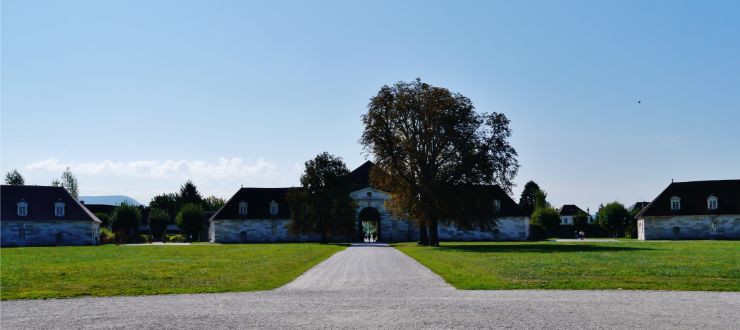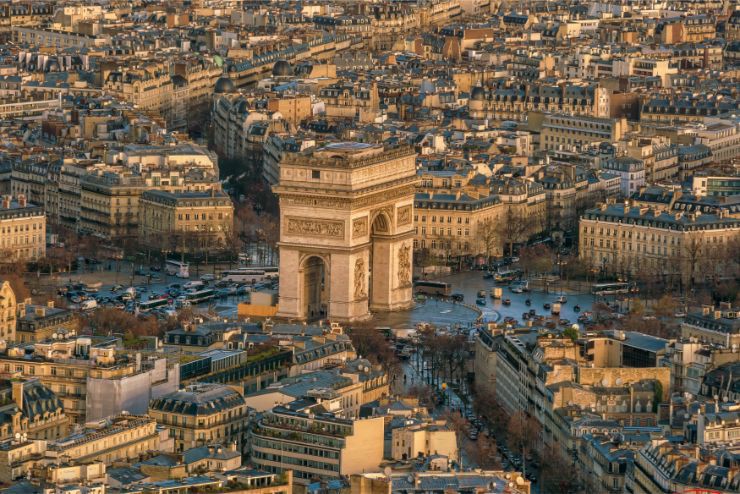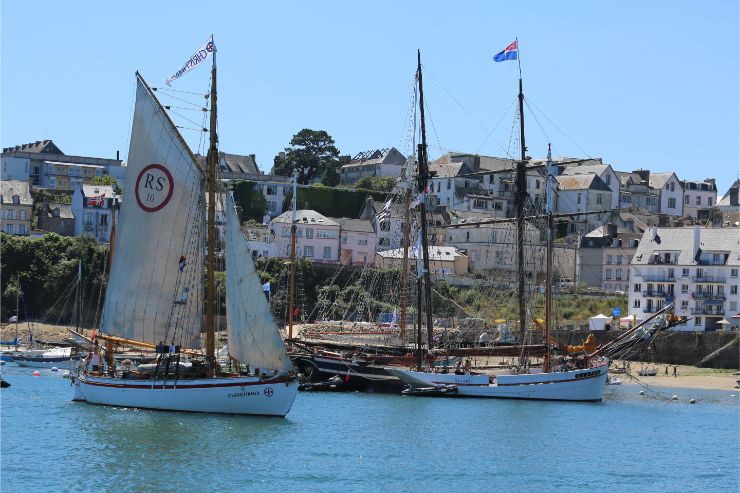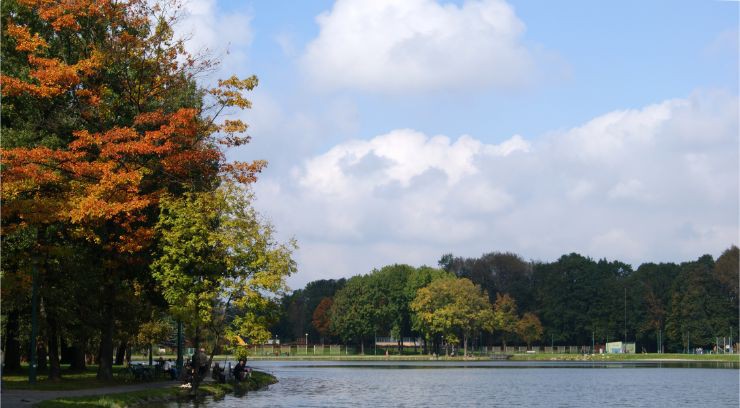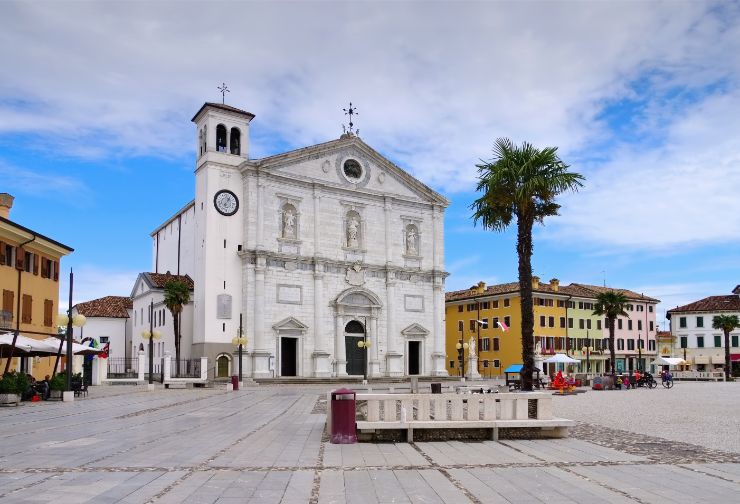People have been seeking perfection for centuries. One of the effects of these dreams were attempts to create a utopian city. Since this vision appeared on the pages of Thomas More's book in 1516, urban planners began to design and then bring to life just such spaces. Utopian cities popped in various parts of the world. Let's discover the most unusual ones, located in Europe.
Where did the planning of a utopian city come from? There were as many reasons as there were projects. All of them, however, always had one thought in mind: the desire for harmony in which people coexist and cooperate without conflict. The perfect metropolis was intended to be a place where people can create a perfect society.
These bastions of good will and cooperation owe their uniqueness not only to the idea that inspired their creation. An extremely well thought-out architecture and functional solutions, were leveraged to bring the dream of a perfect city to life. Perfect in many ways – thus, they became something like organisms – inseparably connected with their citizens.
Did they survive? What do utopian cities look like today and where can we find them in Europe? Do they meet their original assumptions, or maybe to the contrary – no one remembers why they were made? Here are the most amazing European examples of real-life utopias. We present their unique history, interesting architecture and unusual attractions.
1. French dream of a perfect city – Royal Saltworks at Arc-et-Senans
Can you imagine utopian city planning ... of a workplace? This is how the Royal Saltworks was born. A word of introduction. Royal Saltworks is an industrial complex that was meant to become a place of life, work and even worship for employees and their families. Let's go back to the beginning of this original idea, born at the end of the 18th century...
Salt. It all began with salt. Used for preserving food, it has become an extremely valuable and even indispensable commodity. Its ubiquitous use meant that the French government imposed a tax on the population's consumption. Soon, the government also decided to create an ideal place where salt production would be standardized.
The challenge was entrusted to the architect Claude-Nicolas Ledoux. He broke with the traditional approach, creating an ambitious and innovative project of a utopian city. He designed a series of buildings placed around the edges of a huge square and connected by porticos – this way no building was isolated. They surrounded all factories where salt was produced. Finally, the whole complex was to be surrounded by the wall, protecting it against any theft or attempts to break in. And that's not all. You may ask where is the U-factor? The answer lies in the planning itself. We can undoubtedly call it utopian.
By Zairon - Own work, CC BY-SA 4.0, https://commons.wikimedia.org/w/index.php?curid=58844090
The complex was semicircular, which was supposed to reflect the hierarchical organization of work, while creating the so-called perfect circle, similar to the sun. Hence the entrance building was also to be located inside. Both sides of the semicircle were to be guarded by watchtowers. The complex also had a a prison and a forge. And the monumental stairs led to the chapel.
Salt production in this place began in 1779 and lasted until 1962. However, during this time the complex was far from the original utopian city – workers were struggling with difficult conditions, and communal housing intensified personal conflicts.
However, this example of a failed utopia has survived to this day and has been inscribed on the UNESCO World Heritage List. If you happen to be in the center of France spare just a two hours to drive east and visit this gem.
In Royal Saltworks you will also find a museum dedicated to the visionary architect and his projects (Ledoux was known for creating utopian projects that support human interaction - but many of them remained just utopia examples on paper). Museum hosts many exhibitions on salt production and its history. The complex is well prepared to welcome tourists. It has various restaurants, hotels and bars. Plus there is this annual garden festival. It will take you to the 18th century and the (“non”) ideal town of that time.
2. The continuation of the French utopian city planning – Hausmann’s vision of Paris
Let's move for a moment to the nineteenth-century capital of France, today considered the world capital of fashion and one of the most beautiful European cities. What did Paris look like? Narrow medieval streets, outdated sanitary facilities and enormous overcrowding. No wonder most of the revolutions took place right here. During civil fights Parisian crowds overthrew the subsequent governments to momentarily re-revolt – because of hunger and misery.
Napoleon III decided to solve the problem of Paris once and for all. However, he wanted to change people by changing the city. He delegated this task to brilliant urban planner, Georges Hausmann. The capital of France was supposed to change from a gloomy hole, straight from the dark ages, into a modern metropolis, a showcase of the state, and above all an ideal city.
Utopian city planning adopted utilitarianism. New Paris was to be a perfect city in terms of satisfying social needs:
- harmony
- security
- peace.
Plus it based street systems on straight lines to suppress all riots in no time. Unfortunately, every utopia has its price. To incorporate his idea, Hausmann demolished thousands of historic houses and buildings, and even entire neighborhoods, driving the poor people from the center of the new metropolis to its outskirts.
He did, however, make wide avenues, parks (Bois de Boulougne), star shaped plazas, as well as two rows of circular boulevards. Paris gained over 95 km (60 miles) of new streets, thousands of new buildings, fortifications and even... the grand opera house. He also rebuilt the municipal sewage system.
During the works and immediately after their completion, the entire project and reconstruction were severely criticized as an "inhuman experiment on a living urban body" and "mindless destruction of historically valuable urban areas" – mainly Saint-Denis and Saint-Martin. There were, however, more supporters. It was Hausmann’s Paris under of Napoleon III that gave the citizens functional gas installations throughout the city. Needless to say, it was a pioneering solution on a European scale!
The plan of the utopian "City of Light" assumed that the capital of France would not only provide adequate sanitary conditions to the inhabitants. By the way it automatically improved the general state of health in the country. The Paris would also gain the status of the cultural capital of Europe. Did it happen? No one denies it today. But who, when visiting Paris, realizes that they are visiting one of the few utopian cities in the world that have survived to this day? Does it, however, implement the idea of a society living in complete accord and harmony? Well…
You can find out by getting to know the Parisians in person. Trying to get along with someone in English, you will certainly come across a slight resistance. Of course, not because of the lack of knowledge of the language, but more because of the conviction of residents that coming to them should speak their language. Who knows, maybe this is the aftermath of Hausmann's reconstruction that divided Paris into a splendid west and its neglected eastern districts. While walking around the center, you may come across the descendants of the wealthy men, who took over these areas during the creation of the utopian city.
Nonetheless, while visiting contemporary Paris, even today, 100 years after the reconstruction, you will find houses built according to (slightly modified) Hausmann’s rules of construction. And if you want to literally move to 19th century Paris, reach for... a book. La Curée by Émile Zola or his Ladies’ Paradise. They will provide you with a nice dose of utopia, so you can dive into the atmosphere of old Paris.
3. Freetown Christiania - a Danish utopia example that turns freedom into anarchy
The objective of Christiania is to create a self-governing society whereby each and every individual holds themselves responsible over the wellbeing of the entire community. Our society is to be economically self-sustaining and, as such, our aspiration is to be steadfast in our conviction that psychological and physical destitution can be averted.
This can be read from an excerpt of the unofficial declaration of the Free City of Christiania of September 24, 1971. Who was its initiator? A journalist, Jacob Ludvigsen, who was attracted by the idea of free love. However, he did not establish a micro-state in the heart of a European country, but he did it with a group of hippy squatters occupying abandoned barracks scattered around an area of about 40 hectares in a former military installation.
Successive newcomers opened their own schools and kindergartens, lived in makeshift huts. Finally they established their own code of functioning independent of the Danish legal system, sanctioned by the state administration. What can be found there? True utopian planning. Among other things, the law of Christiania forbids to use:
- private cars (“we do not pollute the environment!”),
- theft, use of weapons,
- use of heavy drugs.
Sounds perfect, right? Something went wrong ...
At the peak of Christiania's development, the utopian city was inhabited by several thousand inhabitants. It was colorful inside, the gardens were tidy, people were happy. Unfortunately, at the turn of the 1980s and 1990s, gangs overtook the famous Pusher Street (the main street in the town). They began to control it and, introduced violence and hard drugs to the peaceful town. And what does this utopian city look like today?
It's a real technicolor explosion! During the day Christiania glitters with thousands of shades, thanks to graffiti and "works of art" performed by the residents themselves. Architecture is also unique here – makeshift homes, caravans and even... barges! The creativity of Christiania’s squatters knows no boundaries here.
On the streets you will find free-standing figures made of all types of available materials. The large amount of greenery also draws attention – everyone cares about vegetation and ecology. That is why you will see bikes here at every corner – it is the only allowed means of transport in the Free City. Remember, however, not to film or take pictures of local people – this is strictly prohibited. We also recommend sticking to the principle of no running – people running around a utopian city are considered either thieves or policemen: none of them are welcome here.
What about drugs? Admittedly, entering Christiania (you can do so through two main entrances or from the lake) you may discover the sweet smell of marijuana, but apart from the street mentioned above, you have nothing to fear. This utopian town is a Mecca for idealists, free spirits, independent artists and alternative environments. Numerous concerts, exhibitions and meetings take place here. During its heyday, Christiania even had its own football team!
And the inhabitants are very friendly – the residents meet tourists, with wide gastronomic offers and very attractive prices. Nothing left to do but visit this still living example of utopia. You have several options: by ferry (cruise on the Świnoujście-Copenhagen route or to Bornholm from Germany), by car (crossing the land border between Germany and Denmark) and finally by plane – probably the easiest and most convenient way in this case (flights to Copenhagen take place from almost any larger European airport).
4. Perfection built from scratch - the utopian architecture of Nowa Huta
And now, the opposite case – while the Copenhagen district has become a utopian city, in another European country there is a utopia town, which today is one of the city's districts. What are we talking about? About an ideal working-class town – Nowa Huta.
Built from scratch it was to be a garden city. The construction of settlements of small blocks of flats surrounded by greenery started in 1949. They were located in the fields of the village of Mogiła at Stalin's order. They arose on a plan imitating the Baroque Rome. "Socialist city of the future" – this is what they used to say about Nowa Huta. The city's design contained almost all utopian elements.
https://www.instagram.com/p/B2JfhSJoEZn/
Its heart was to be the central square modeled after the Greek agora. Plac Centralny was a place where all public life happened. Nowa Huta itself was designed on the plan of the sun, referring to the second (next to More’s) classic utopian book, The City of the Sun by Thommaso Campanella.
The most important government buildings were built in the very center of Nowa Huta. Of course, utopian architecture assumed full spaciousness and comfort. Utopian city planning was also designed to meet all the needs of the residents. That is why this small space was meticulously developed with:
- parks,
- cinemas,
- theaters,
- restaurants,
- shops,
- service outlets,
as well as extensive avenues and of course huge residential buildings housing all workers.
Nowa Huta was supposed to become a large metallurgical plant – in practice. Because in theory it was a "happy city of a happy future", that should – in no time – transform the village man, the farmer into a city man and worker. The city example was supposed to show how misery can transform into an area of prosperity.
However, as with any utopia, reality turned out to be cruel – the workers initially lived in simple wooden barracks, and the pollution of the air and the surrounding area reached its peak. Instead of a separate city, Nowa Huta was absorbed by Krakow, becoming one of the districts of the former Polish capital. However, thanks to the Polish authorities, it changed drastically, so today it is one of the cultural centers of the city.
By Michel Briand - Own work, CC BY-SA 3.0, https://commons.wikimedia.org/w/index.php?curid=20410123
At the Sphinx Cinema you can watch niche, original movies. At the Ludowy Theater or Łaźnia Nowa Theater you will see exceptional stage artists. In the Museum of PRL you will find genuine artifacts from that era. Thanks to Discover Cracow you can even go here for kajaking on the small river Dłubnia, which flows through the Nowa Huta district.
The most popular choices
And that's not all! Nowa Huta once was a battleground for the very important church. The Lord’s Ark was the first church built in communist District. It was consecrated by the future Pope John Paul II, who at that time was Cardinal Karol Wojtyła. And became a symbol of resistance against the communist regime.
Nowadays in this utopian city you will find both Catholic churches, a Pentecostal church congregation, a Seventh-Day Adventists’ prayer house, and even complexes of Kingdom Halls of Jehovah Witnesses. In addition, over a dozen parks, reservoirs, and small forests that will make you feel closer to nature. Therefore, today Nowa Huta is no longer what it was intended to be, but the utopian plan also somehow broke through – the city design engineer assumed that there would be a maximum of 100,000 people. Today, over 300,000 live here!
5. Palmanova – an Italian attempt to control chaos
Moving to the south of Europe, we are simultaneously moving to the times when the idea of a utopian city was just born. Established in 1593, Palmanova was supposed to be a fortress city, reflecting the architectural harmony of symmetry and moderation. It was designed by Vincenzo Scamozzi on behalf of the Venetians. City center was a hexagonal market surrounded by streets forming a star-like shape. The main streets had the same length and width. The streets ended with the city gate. And the entire city was surrounded by a wall. The aerial view of Palmanova reveals that it is shaped like a perfect snowflake!
In theory, this utopian city was to "produce" perfect citizens. By limiting randomness in architecture, the creators thought they would be able to eliminate it in society as well. That is why the city was founded on October 7th - exactly on the 22nd anniversary of the defeat of the Turks by Christian Europe under Lepanto. Then it was St. Justina of Padua, who was elected the patron of Palmanova.
The problem, however, was that no one wanted to live in such a closed, self-sufficient place. In 1622, the only inhabitants of this utopian city were the army and pardoned prisoners. Do you think they embodied utopian visions of living in harmony and peace? We will not find out today, because currently the city is inhabited by "ordinary" citizens, around 5,400 of them. And the authorities are still trying to attract new residents here, including trying to give Palmanova the status of a UNESCO World Cultural Heritage city.
You only need 2 hours to visit this amazing town. However, these will be exceptional hours:
- starting from entering through one of the three monumental gates,
- through a visit to the main square (with a historic stone that is also the center of the city),
- to a visit to the cathedral at Piazza Grande – an example of the best architecture of the Friuli-Venezia Giulia region.
Although the city has a train station, there are no direct long-distance connections. So it's best to go to Palmanova by car. The city lies on the junction connecting the A23 and A4 motorways. It is worth stopping on your way to the northern Adriatic coast and spend a moment on the beach in beautiful Grado, as well as cross local roads through extremely picturesque villages. Despite the proximity of the Alps and the appearance of a snowflake, the climate of Palmanova definitely resembles the characteristic upper Adriatic coast type of cozy towns cherished by travelers.
Utopian cities at your fingertips
Cities have always been more than just a place to live. The Sumerians had already devoted them to the moon gods! It does not matter, however, whether utopian projects are born from the super-technological schemes of modern architects or manic dreams of nineteenth-century utopists. Whether they are visions of puritans about the perfect place of worship, or tyrants wanting to "save the world". Creating city-utopias always shows faith, that it is a city that can be the solution to mankind’s problems.
More's idea was based on the highest philosophical and political ideals of his own era. While leaving the pages of his book this idea was sometimes distorted and caricatured. But the utopian cities that we can still see are testimonies of the existence of an extraordinary faith and the strength of its realization. If you have the chance to see one – don’t miss it!

